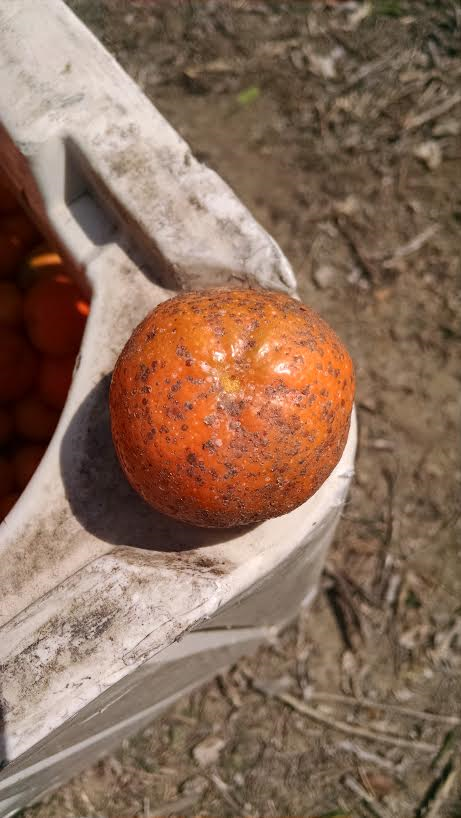It never got very cold this winter in spite of the freeze we had at the turn of the new year. Insects that are normally knocked back by cold weather such as scales and the formidable Asian Citrus Psyllid continued on very well, thank you. Along the coast we have have had a major issue with red scale in lemons, which normally is in pretty good biological control.
California red scale and yellow scale are armored scales that are distributed throughout the citrus-growing regions of the state except in parts of the Coachella Valley where they are under an eradication program. The two species are difficult to distinguish by appearance. Yellow scale, however, is rarely found on mature wood of the tree whereas California red scale can be found on the wood as well as on fruit and leaves. Biologies and management tactics for California red scale and yellow scale are similar, but yellow scale is more easily controlled by natural enemies and, thus, less commonly found.
Female scales have a roundish cover, about the size of the blunt end of a nail. The cover is firmly attached to the leaf, wood, or fruit substrate when the scales are molting or reproducing; they remain under this cover throughout their life. When mature, they produce 100 to 150 crawlers.
Crawlers hatch and emerge from under the female cover at a rate of two to three per day. Crawlers move around to find a suitable place to settle and can be spread about by wind, birds, or picking crews. They settle in small depressions on twigs, fruits, or leaves and start feeding; soon after, a circular, waxy cover forms over their body. Midway through the second instar, females and males begin to develop differently. Males form an elongated cover while the female cover remains circular. The female molts twice, developing a concentric ring in the center of the waxy covering each time.
Adult male scales are small, two-winged insects that emerge from the elongated scale covers after four molts. They live about 6 hours and their sole purpose is to mate. The number of male flights, along with the number of generations per year for this insect varies according to the growing region in the state and the weather but is generally about 4 flights per year.
Oils can be effective against California red scale if coverage is thorough. They also have the advantage of being relatively less damaging to natural enemy populations than other insecticides. However, special care must be taken to avoid applying dilute applications of oil at times when it can damage fruit and leaves or reduce populations of natural enemies. In some cases, though, growers have had to resort to more harsh chemicals such as chlorpyrifos.
Attached Images:
